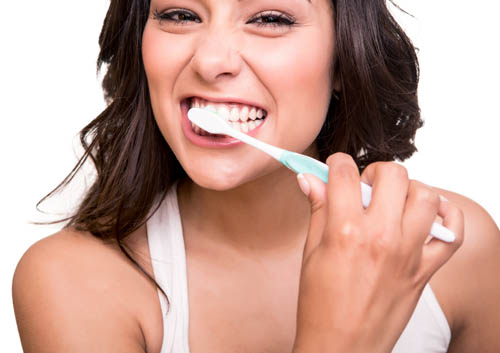August 3rd, 2017

Regular visits to the dentist are important for people of all ages. Seeing Dr. James Robson as recommended provides preventive care for oral diseases. If a disease is already present, early detection can prevent hefty dental bills and further damage to the teeth and gums. Once you have made the decision to visit Robson Dentistry, you may ask yourself, “What happens during my hygiene appointment?”
Preparation
Arrive at your appointment a few minutes early and bring along any insurance cards or medical information. While it may seem irrelevant, a full medical history can be important, since certain conditions include symptoms that occur inside the mouth.
Initial appointment
In some offices, the first appointment is a screening appointment, during which a dental hygienist will go over your medical and dental history with you, assess the condition of your teeth and gums, then schedule a future appointment to complete the cleaning and any other treatments you may need. In other offices, the screening and cleaning will be done over the same appointment. The dental hygienist may:
- Count your teeth
- Clean your teeth by using a small tool to scrape them in order to remove plaque
- Brush and floss your teeth
- Apply a fluoride treatment using foam that sits on your teeth within a tooth mold, or a gel that can be “painted” on with a small brush
- Inspect your teeth for cavities or signs of decay
- Administer oral X-rays. You will be covered with a special blanket to protect your body and then given a small piece of plastic on which to bite.
Seeing the dentist
After the dental hygienist completes his or her portion of the appointment, the dentist will usually come in and inspect your teeth. After an initial inspection, the dentist may:
- Perform a quick tooth count as well as a more thorough inspection, looking for signs of decay in and around the teeth
- Use a small tool called a “probe” in order to check for signs of gum disease around the base of your teeth
- Visually inspect the skin around your mouth, called the “mucosa”
If you need any further dental work completed, you will usually be required to make an additional appointment. To learn more about hygiene visits, or to schedule an appointment with Dr. James Robson, please give us a call at our convenient East Lyme, CT office!
July 27th, 2017

Periodontal health — which refers to the condition of the structures that support your teeth — is an important part of your oral and overall health. However, periodontal health becomes even more important when you're pregnant. Bad oral health can have detrimental effects on the health of your unborn child and can lead to low-birth weight babies and giving birth to a pre-term baby, according to reports by the American Academy of Periodontology (AAP), the European Federation of Periodontology (EFP), and several research studies.
Periodontal disease (gum disease) is a set of chronic, bacteria-induced, inflammatory diseases that attack the gum tissue and in more severe cases, the bones supporting the teeth. Early signs of periodontal disease usually include tenderness, swelling, and redness. Symptoms can also include bleeding gums when flossing or brushing, receding gums, loose teeth, and bad breath. These signs shouldn't be ignored, especially if you're pregnant.
Prevention is the best tool you have to fight periodontal disease. Here are some steps you can take to keep your gums in tiptop shape:
- Brush your teeth properly twice a day – angle your toothbrush at the gum line to help disrupt the bacterial growth that eventually leads to periodontal disease, and make sure you don't brush too hard.
- Floss daily and clean behind the back molars on the top and bottom of your mouth.
- Use antiseptic mouthwash to rid your mouth of the bacteria that can cause gum disease.
- Get regular checkups at our East Lyme, CT office to ensure you have no signs of periodontal disease and that your oral hygiene habits are effective.
Dr. James Robson and our team urge women to care for their periodontal health during pregnancy to avoid complications. If you have any questions regarding periodontal health and how it affects you and your baby's overall health, please contact our East Lyme, CT office for more information.
July 20th, 2017

With advancements in prosthetic dentistry, patients are now able to wear dentures that are comfortable, natural looking, and long lasting. There are different options to choose from that will meet your individual needs, whether you have a few teeth missing or have lost all of your teeth. Dr. James Robson will be able to help you decide which denture option is best for you.
Partial Dentures
Patients who receive partial dentures have some of their original teeth still in place and therefore only need a partial to replace the missing teeth and keep their existing teeth from moving. It also makes sense that patients need them to be able to eat comfortably. All dentures are made from porcelain or plastic and are made with comfort in mind.
Complete Dentures
If you have suffered from complete tooth loss, you would typically receive complete dentures. Immediately after you have your teeth extracted you will leave the dentist office with a set of temporary dentures. These will be worn for a few months while your mouth heals. After this initial wait time, your conventional or permanent dentures will be ready to be fitted.
Implant-Supported Dentures
Implant-supported dentures involve a more invasive procedure, but are also permanent. A select number of implants are placed into the jaw. The denture is then attached to the implant posts. You will be able to chew normally and maintain normal dental hygiene, like brushing and flossing.
Dr. James Robson will be able to advise on which kind of denture would be the best based on your individual needs. Contact our East Lyme, CT office to schedule an appointment!
July 13th, 2017

Brushing your teeth properly removes the food particles and bacteria that can lead to tooth decay and gum disease. However, you do not want to scrub your teeth or gums heavily. A heavy hand can lead to tooth and gum erosion, as Dr. James Robson and our staff see all too often.
You should also use a soft bristle toothbrush to avoid damaging the surface of your teeth. Make sure the head of the brush fits in your mouth, because if it is too large you will not be able to reach all tooth surfaces. Follow these steps to ensure you are brushing properly.
- Use a small amount of toothpaste on your brush. The recommendation is a pea-sized amount or thin strip on the bristles.
- Hold your toothbrush at a 45-degree angle to the surface of your teeth, angling towards your gums. Use a circular motion on all exterior tooth surfaces, and avoid back-and-forth “scrub” brushing.
- Once you have cleaned the outer surfaces, hold the brush vertically and clean the inner teeth surfaces — the side of your teeth that face your tongue. Do not forget the inner surfaces of your front teeth.
- Finally, finish by cleaning all the chewing surfaces of your teeth. You need to maintain a gentle touch, but make sure you get into the full depth of your molars. The entire process should take about two minutes.
Dr. James Robson and our staff recommend changing your toothbrush every three to four months for best results. Do not forget to clean your tongue, which helps remove excess bacteria from your mouth. Special brushes are available just for cleaning your tongue, and they are easy to use.
Proper care of your teeth also requires flossing on a regular basis. Flossing can be performed before or after you brush. Following up with a quality mouthwash will provide you with even more protection. Do not be afraid to ask the Robson Dentistry team for tips on proper brushing and flossing.




